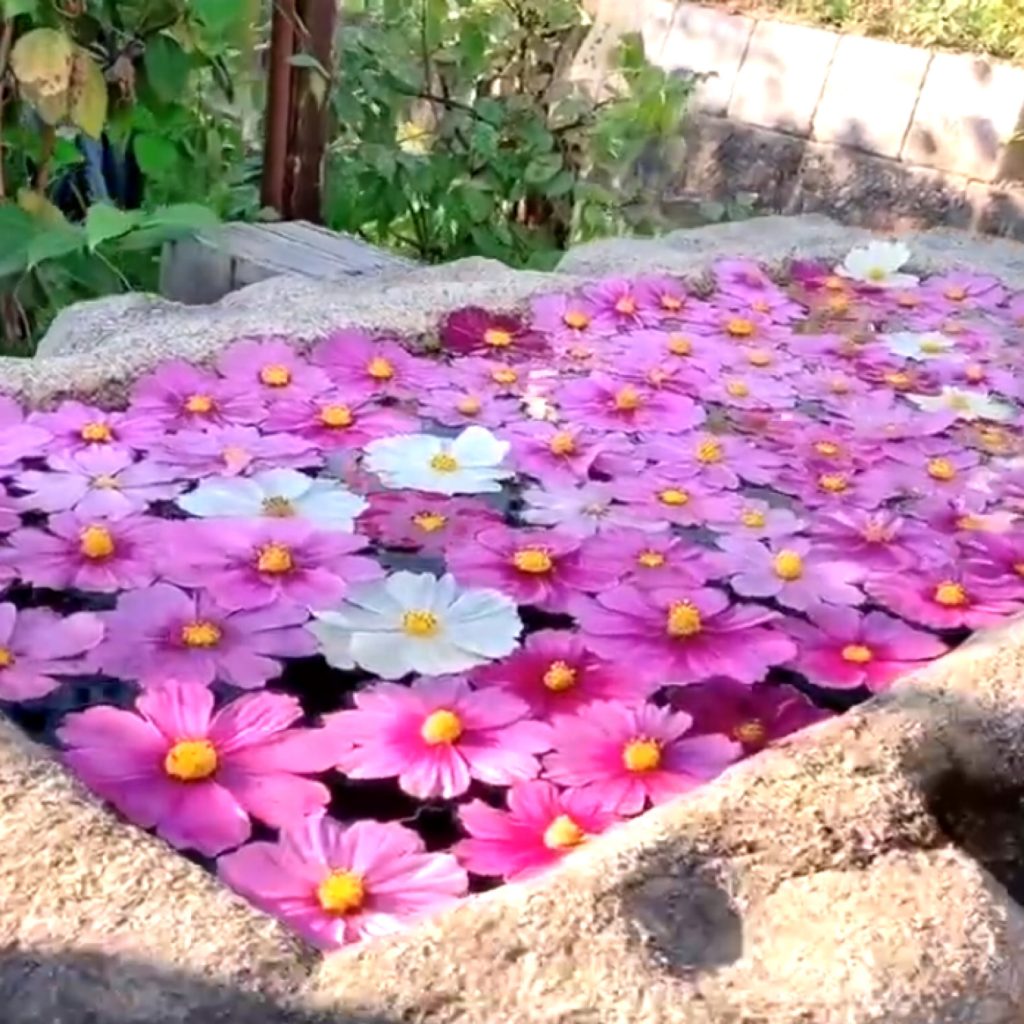
When visiting a shrine or temple, the place where you purify your body and mind by scooping water with a ladle is called a “temizu-ya” (手水舎). Temizu-ya have a water basin with water flowing constantly, and a ladle placed upside down. This ladle is used to wash your hands and mouth with water, or to refer to the water itself as “temizu”. However, since the COVID-19 pandemic, a number of shrines and temples have discontinued the use of temizu-ya to prevent the spread of infection. Instead of being able to wash your hands at the temizu-ya, a number of shrines and temples have started to install “hana-temizu” (花手水), which are decorated with flowers. It has become standard to float seasonal flowers in hanamizu. With its splendor and beauty, hanamizu has become a popular spot for Instagram photos. Now, hanamizu has spread throughout Japan, and is attracting even more attention from foreign tourists to the beauty of Japan.
神社やお寺で参拝をするとき、柄杓(ひしゃく)で水をすくって身と心を清める場所を手水舎(ちょうずしゃ)と言います。手水舎には、常に水が流れている水盤(鉢)があって、柄杓が伏せて置いています。この柄杓を使って、水で手や口を清めること、または、この水そのものを手水(ちょうず)といいます。ところが、コロナ禍になってからは感染拡大防止の観点から手水舎の利用を中止する神社や寺院が相次ぎました。手水舎で手を洗えない代わりに、目で見て心を清めてもらうのを目的に、花を飾る花手水を設置する神社やお寺が相次ぎました。花手水には季節季節の花々を浮かべるのが定番となりました。その華やかさと見た目にも癒やされると言うことで、インスタ映えスポットとしても注目されるようになりました。今では花手水は全国的に広がり、外国人観光客にも日本の美しさをいっそうアピールしている様です。
